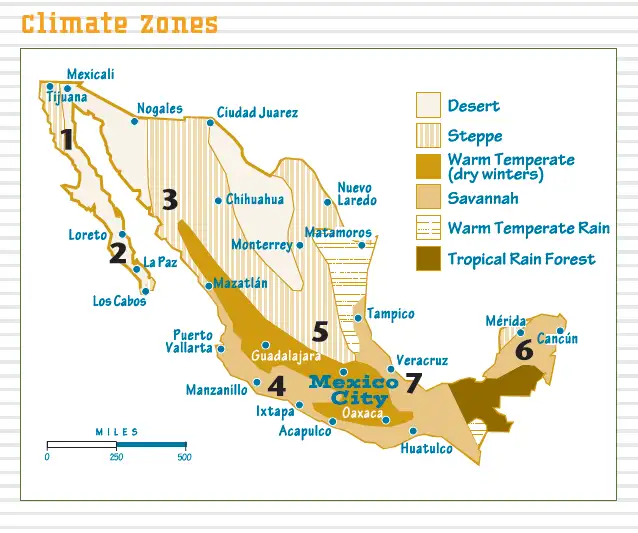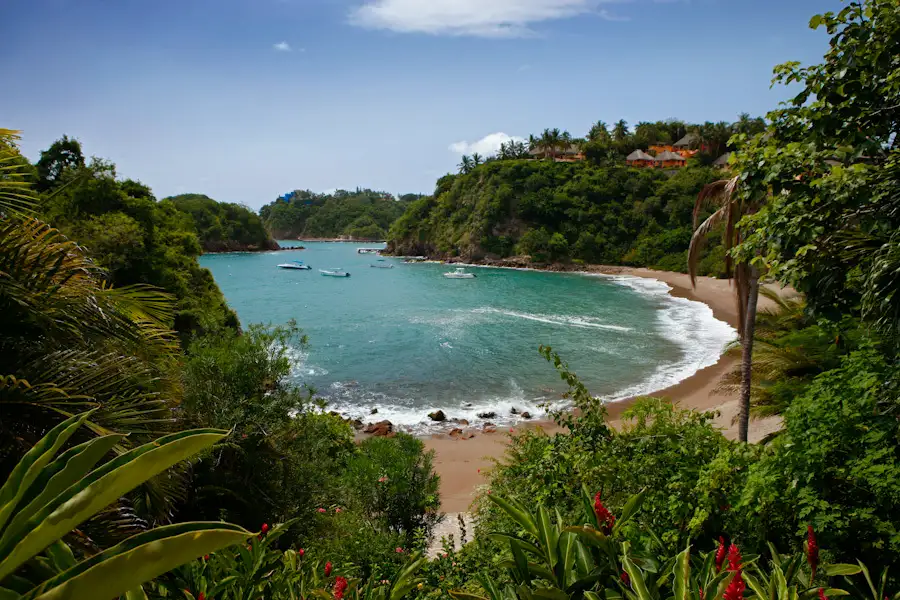It’s Climate in Mexico that Counts
We all come to Mexico with different expectations when it comes to “good” weather. For those of us coming from northern latitudes, heat and humidity can be debilitating. If you’re here from the US southeast, it might be higher altitude and winter cold that’s unbearable for year ‘round living.
The good news is Mexico can accommodate just about any climate preference. While fully enmeshed in “the tropics” (a demarcation that starts just south of where the Baja peninsula ends), Mexico has altitude as a mitigating factor that moderates temperature and rainfall.
The physical diversity of Mexico is expressed in the country’s varied climatic conditions. Among the reasons for such diversity are latitude position (most of Mexico lies south of the Tropic of Cancer), complicated terrain, varied altitudes (nearly half of the country is over 4,000 feet above sea level!), and the influence of adjacent seas and oceans.
Most of the country is exceptionally dry, particularly in the northern regions and the Baja Peninsula. Southern Mexico and the Yucatán Peninsula experience pronounced rainfall, with areas in Chiapas State tallying over 150 inches of annual precipitation!
As in most tropical regions, Mexico has two weather seasons: rainy and dry. Generally, rainfall and temperatures rise from June through October, leaving November–May as the more temperate, drier season. So, here’s a map and regional breakdown of what to expect.

1 Northern Baja
Despite the desert landscape, this region resembles Southern California, with little rain, warm summers, and mild winters. The Sea of Cortés side tends to be warmer than the Pacific side of the peninsula.
2 Southern Baja
This subtropical desert boasts over 350 days a year of sunshine, cool winter evenings, low humidity and refreshing sea breezes. Summer temperatures climb into the low 100’s but are generally cooler on the Pacific Ocean side. There’s also a Fall hurricane season (Sept-Oct) to deal with.
3 Northwest Coast
This region is like Northern Baja, but with more rain and stronger storm patterns.
4 West Coast
Also known as the “Riviera,” this region has warm tropical weather year-round. November through April are blessed with warm, dry days and balmy evenings. The region has a pronounced rainy season (June-October) with heavy humidity, brief daily rain showers, and warm temperatures.
5 Central Plateau
Due to higher elevations, this region has pleasant, spring-like conditions through much of the year. Rainfall is most pronounced June through September. April and May see higher temperatures. Cool and often cold evenings are common in winter.
6 Yucatan Peninsula
In this region, coastal proximity largely determines temperature and humidity. In summer, the Gulf and Caribbean coasts stay cooler due to trade winds, while interior jungles are hot and humid. Rainfall occurs from April–May and September–January, when temperatures soar into the 90’s. September and October bring the chance of hurricanes and sometimes prolonged cloudiness. Winters are very pleasant.
7 Gulf Coast
This region is muggy with severe summer temperatures. Rainfall increases significantly south of Tampico, where cold nortes (brisk northerly winds) often hit from September through February.
Average Annual Precipitation
Mexico for living is all about outdoor enjoyment. So, pick you village in the sun taking these weather realities into account. You can join our online community to ask locals about their outdoor living experiences. www.choosingmexico.com




